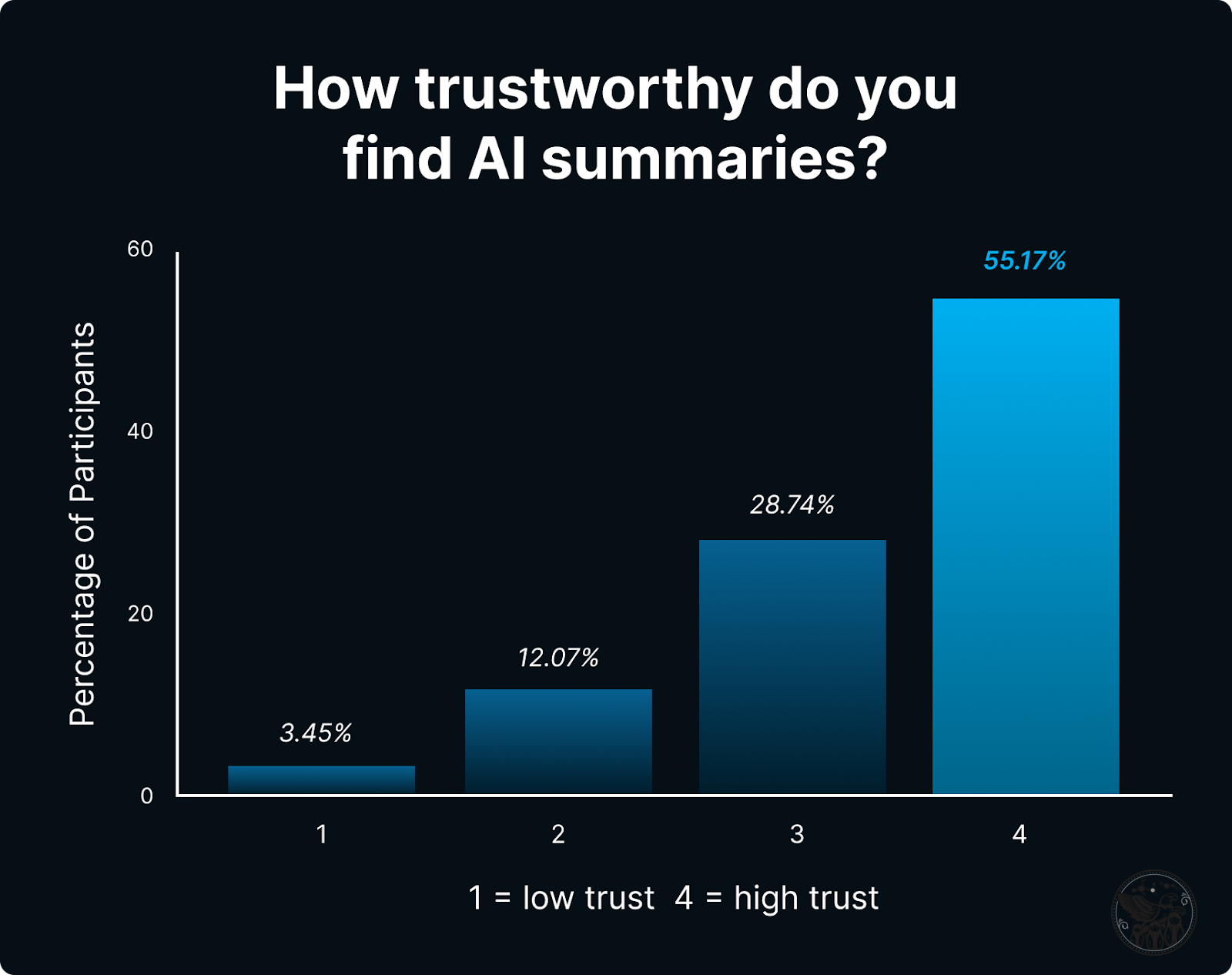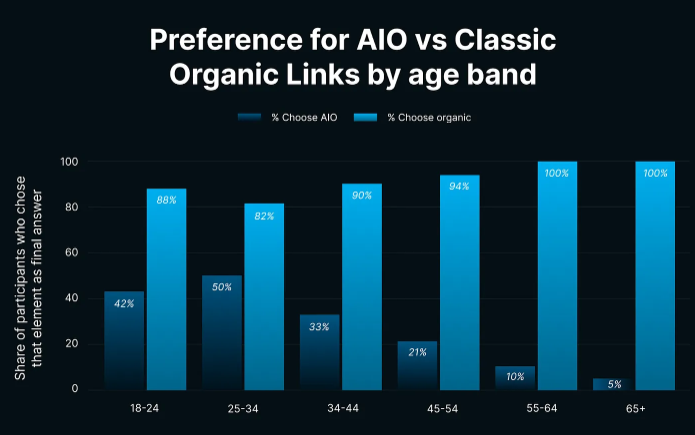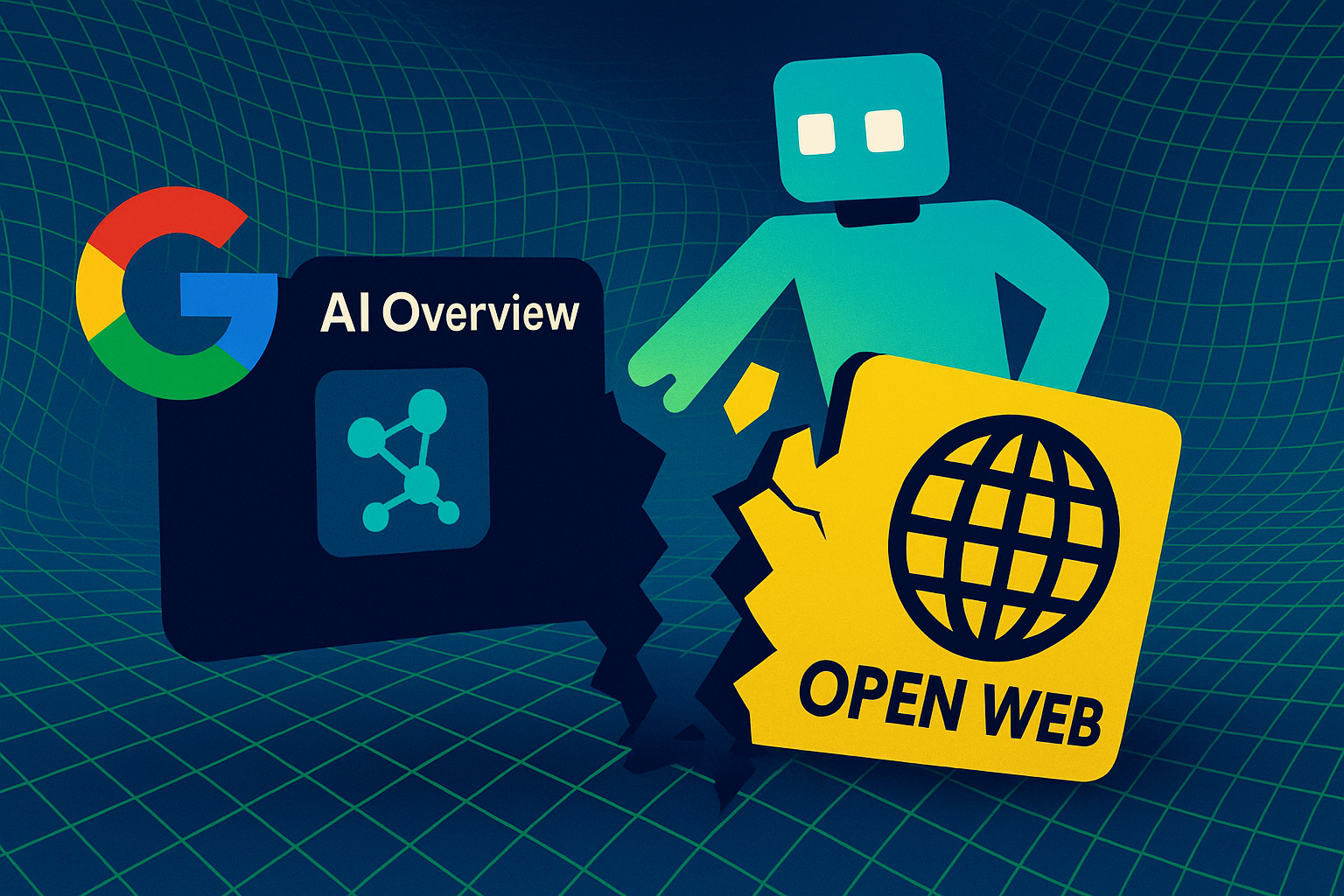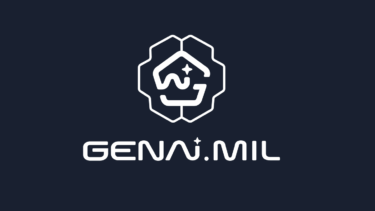Google, Apple, OpenAI, and others say the future of search is about answers, not links. A new user experience (UX) study shows just how much this shift is already changing how people use the web—and what it could mean for publishers, platforms, and the entire search ecosystem.
The main takeaway from the study: when Google's AI Overview (AIO) appears in search results, people mostly stop clicking. On desktop, outbound clicks to external websites drop by about two-thirds. On mobile, the drop is nearly 50 percent. Many users see the AIO as a complete answer. Clicking on links inside the AIO is rare—7.4 percent on desktop, 19 percent on mobile.

Most users approach search in two steps: first they check whether a source looks trustworthy, then they see if the content matches their intent. When well-known brands or .gov/.edu domains are shown, they get clicked first in 58 percent of cases. 18% of users sought further validation by opening a second source like a Reddit thread, a YouTube video, or another organic result.
Even when users interacted with the AIO, they didn't go far. While 88 percent tapped "Show more," the median scroll depth was just 30 percent. Most (86 percent) only skimmed the content, and very few reached the bottom of the answer. Trust and visibility were concentrated in the top third—similar to how people treat traditional snippets in search.
The more personal the search, the more critical the user
Scroll behavior changed depending on the topic. For high-stakes queries—like health or finance—users scrolled deeper, with average scroll depth rising above 50 percent. For lower-risk tasks, such as searching for coupons, it dropped to just 34 percent. These more sensitive topics also triggered more scrutiny. In 38 percent of AIO sessions, users opened a second source to verify the information they were seeing.
When users did leave the AIO, they often went to platforms like Reddit, YouTube, or other forums. These "validation sources" were especially important to younger users. For DIY queries, many skipped the AIO entirely in favor of videos showing real-world demos. On average, users spent 37 seconds watching videos—more than the 31 seconds they spent inside AIOs.
Younger users and people with higher digital literacy were more likely to treat AI answers as final. Among users aged 25 to 34, half accepted AI responses without looking further. Mobile users also scrolled further (54 percent) than desktop users (29 percent). Older users still preferred the traditional blue links.

For commercial queries—like product comparisons or shopping recommendations—users glanced at AIOs but still relied on other platforms. Amazon, in particular, acted as a kind of meta search engine.
In these cases, traditional organic results didn't matter much. Paid ads and Google-curated verticals took up seven out of ten clicks. AIOs barely drove any traffic, partly because users preferred visual elements, star ratings, and user reviews when making buying decisions.
Search marketing is shifting from clicks to presence
For marketers, the study suggests a major change in how success is measured. Instead of focusing on clicks, it may be more useful to track visibility—how often and how prominently a brand appears inside AIOs. Metrics like citation rank or "share of voice" could become more important than classic rankings. The fight for space on the search results page is shifting from ranking to presence.
But that shift won't help everyone. Sites that depend on direct traffic—especially publishers—stand to lose the most. Some may be forced to buy that traffic back from platforms like Google. The result: more power concentrated in the hands of Google, Meta, and eventually Apple.
Google recently announced plans to roll out AI Overviews globally. A more advanced version, called AI Mode, is already in development. It's designed to keep users inside the Google ecosystem even longer—and reduce clicks even further.
Other research supports the idea that we're moving from searching the internet for information to letting AI generate answers from it—a shift that could fundamentally change how people interact with the web.
How the study was conducted
The study was carried out by Kevin Indig in collaboration with Eric van Buskirk and his team, and published on Growth Memo. It involved 69 English-speaking users in the U.S.—42 on mobile and 27 on desktop.
Participants completed eight real Google searches, six of which included an AIO result. Topics ranged from shopping and finance to health and DIY. Sessions were recorded using UXtweak, capturing screen activity, scrolling, mouse movement, and audio commentary via "think aloud" protocols.
Three trained analysts reviewed over 500 videos frame by frame. They logged scroll depth, dwell time, click behavior, user reactions, and final decisions. The team then analyzed key metrics like trust scores, click rates, and scroll behavior to draw their conclusions.






